Impressive Underground Towns Where People Actually Lived

Ever wondered what it would be like to live beneath the Earth’s surface? Throughout history, people have created amazing underground towns for protection, shelter, and even spiritual purposes.
These hidden communities aren’t just holes in the ground – they’re complex networks of tunnels, rooms, and gathering spaces that housed entire populations. Let me show you some of the most incredible underground settlements where people really made their homes.
1. Cappadocia, Turkey

Would you believe that beneath the fairy chimneys of Turkey lies a massive underground city? Ancient people carved this subterranean wonder from soft volcanic rock, creating a labyrinth that could house thousands.
The city includes ventilation shafts, water wells, and even wineries! Residents could live completely underground for months during enemy attacks. Some areas extend eight levels deep, with narrow passages designed to slow invaders.
Many families lived here until the 1950s, though today it’s primarily a tourist attraction.
2. Coober Pedy, Australia
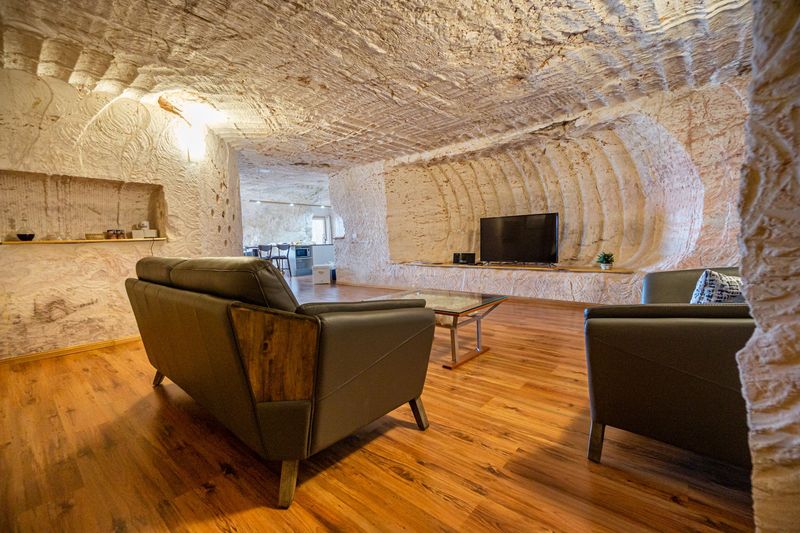
Down under in Australia, there’s a town where living underground isn’t ancient history – it’s everyday life! Scorching desert temperatures reaching 125°F drove opal miners to dig their homes beneath the surface where it stays comfortably cool.
These ‘dugouts’ aren’t primitive caves but modern homes with electricity, internet, and stylish interiors. The town boasts underground churches, hotels, and even a bookstore.
Roughly half of the 1,600 residents still live underground today, making this one of the few subterranean communities still thriving.
3. Matmata, Tunisia
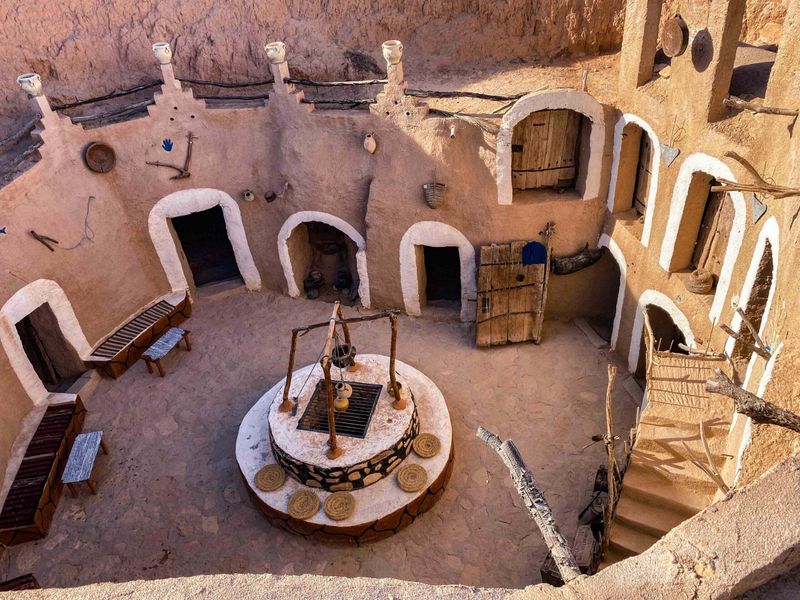
If this underground town seems familiar, you might recognize it from Star Wars! The Berber people of Matmata dug massive pits into the soft sandstone, then carved rooms around the edges to create courtyard-style homes.
Each pit measures about 30 feet deep and 100 feet across. Families connect their cave rooms with tunnels, creating complex multi-room dwellings that stay cool despite the brutal desert heat.
Though many residents moved to modern housing after severe flooding in 1969, some families maintain these traditional homes that date back centuries.
4. Wieliczka Salt Mine, Poland
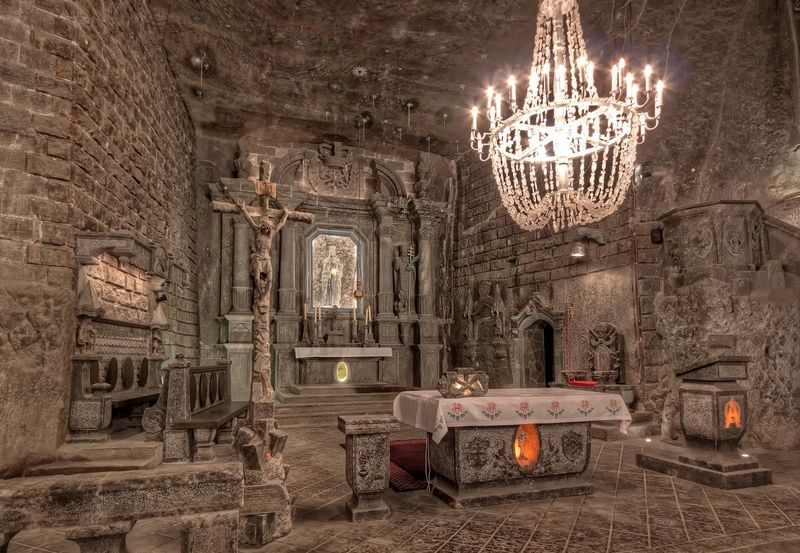
Salt miners transformed an ordinary mine into something extraordinary! For over 700 years, workers in this Polish salt mine didn’t just extract minerals – they created an underground wonderland complete with chapels, statues, and chandeliers all carved from salt.
Miners actually lived in some sections of the mine during long work periods. The highlight is the Chapel of St. Kinga, a massive underground church with altars, sculptures, and relief carvings all made entirely of salt.
The air inside is exceptionally clean, leading to the establishment of a health resort for people with respiratory problems.
5. Lalibela, Ethiopia
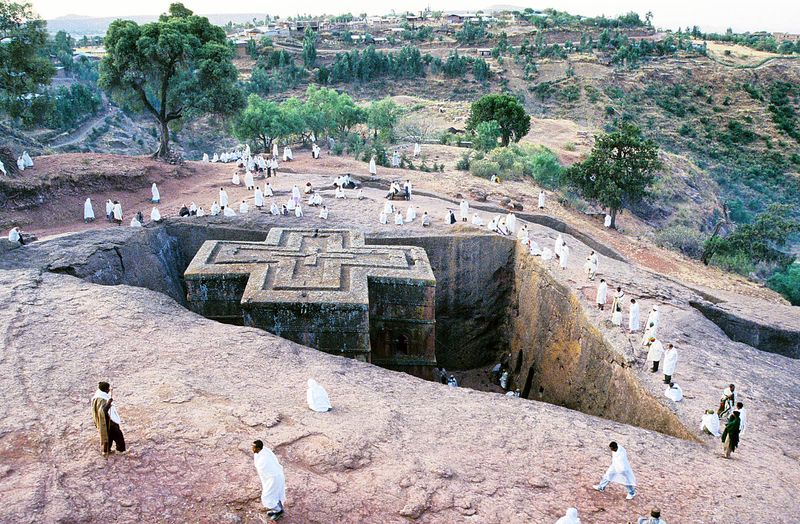
Hidden in the Ethiopian highlands are 11 extraordinary churches that weren’t built up – they were carved down! Unlike other underground structures, these 12th-century marvels were created by excavating from the top down, essentially sculpting entire churches out of solid rock.
King Lalibela ordered their construction as a “New Jerusalem” when pilgrimages to the Holy Land became dangerous. Each church was chiseled from a single piece of volcanic rock, with intricate details including windows, columns, and drainage systems.
The most famous, the Church of St. George, forms a perfect cross when viewed from above.
6. Petra, Jordan
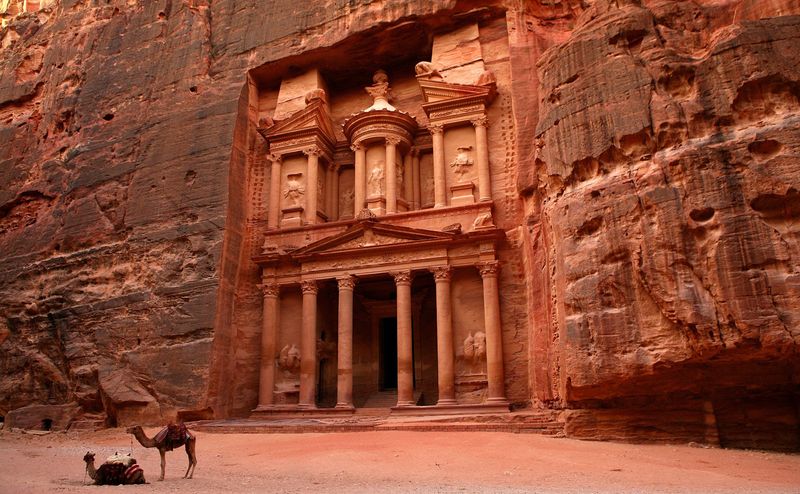
The rose-red city of Petra isn’t entirely underground, but its most impressive dwellings are carved directly into sandstone cliffs. The Nabataeans created this architectural marvel around 2,000 years ago, chiseling elaborate facades and living quarters deep into the rock.
Inside these cliff faces were homes, temples, and tombs with sophisticated water management systems. The city housed up to 30,000 people at its peak and served as a crucial trading hub.
Though famous for the Treasury building seen in Indiana Jones, hundreds of other structures remain hidden throughout the site’s 102 square miles.
7. Kish Qanat, Iran
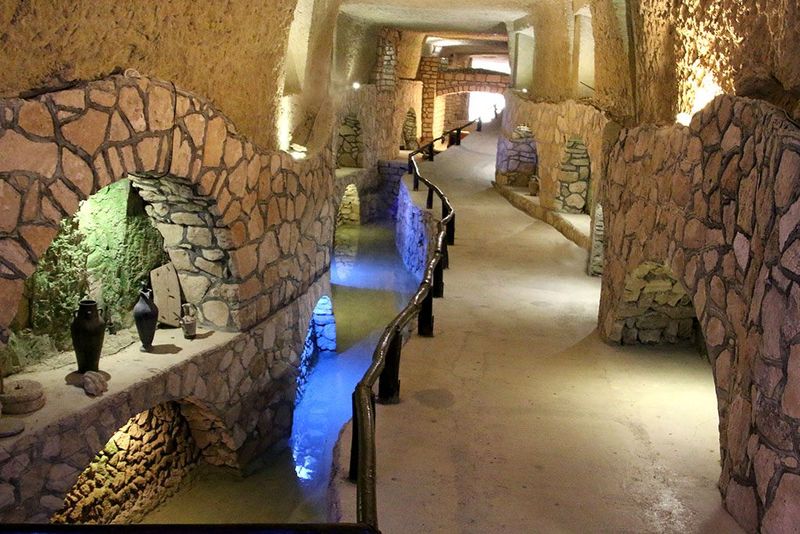
Ancient Persians mastered underground engineering with the qanat system – a network of underground aqueducts that transported mountain water to desert settlements. In Kish, they took this concept further by creating underground living spaces alongside these water channels.
Families built multi-room homes beside the flowing water, enjoying natural air conditioning from the cool water and ventilation shafts. These underground neighborhoods included public spaces, storage rooms, and even ice houses.
Some qanat systems have been continuously maintained for over 2,500 years, making them among the oldest engineered structures still in use.
8. Orvieto, Italy
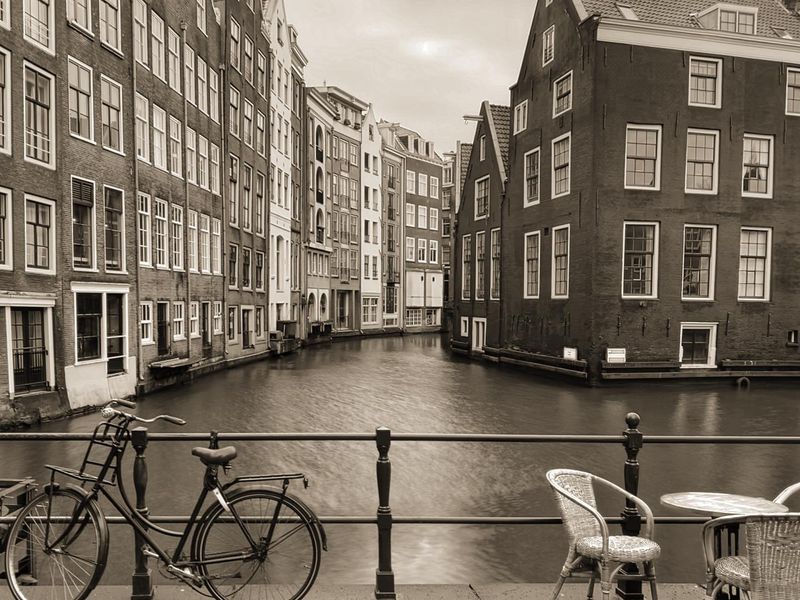
Beneath the medieval streets of Orvieto lies a hidden city that’s older than the visible one above! The Etruscans carved over 1,200 caves, tunnels, and rooms into the volcanic tuff plateau between the 6th and 1st centuries BCE.
These underground spaces served as homes, workshops, olive presses, and storage facilities. During medieval times, wealthy families built wells and escape tunnels connecting their palaces to the underground network.
Unlike many underground cities built for defense, Orvieto’s subterranean spaces were primarily for everyday activities and commerce, showing how integral underground living was to their society.
9. Derinkuyu, Turkey
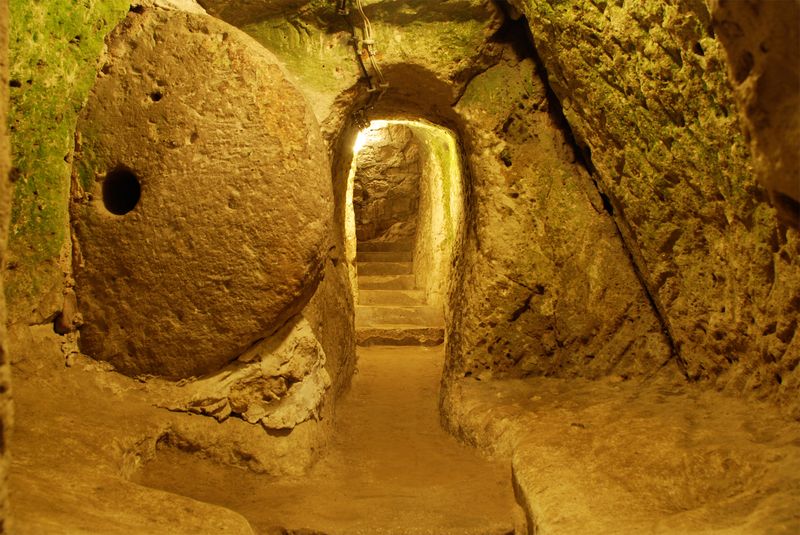
The deepest underground city ever discovered descends an astonishing 18 levels into the earth! Derinkuyu in Turkey could shelter 20,000 people along with their livestock and food supplies during times of danger.
This engineering marvel featured heavy stone doors that could be closed from the inside, ventilation shafts that prevented detection from above, and wells that couldn’t be poisoned from outside. Residents created schools, churches, storerooms, and stables all beneath the surface.
Remarkably, this massive underground complex remained hidden until 1963 when a modern homeowner knocked down a wall during renovations and discovered a mysterious room.
10. Loyang Cave Houses, China
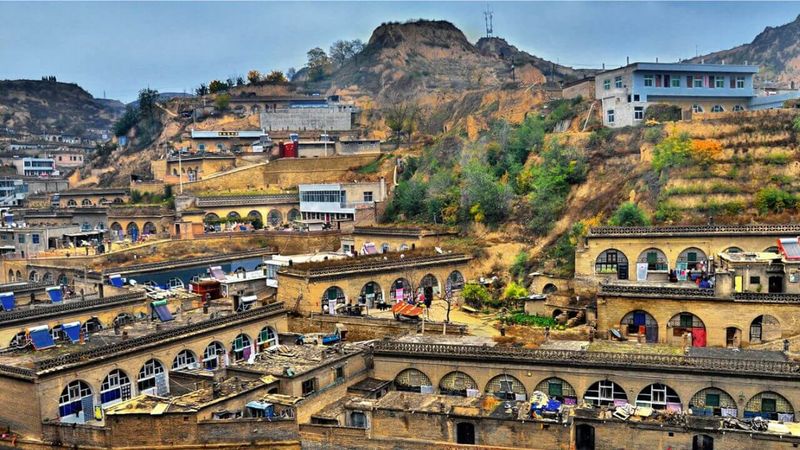
In China’s Loess Plateau, generations of families have lived in yaodong – cave homes dug into the region’s distinctive yellow soil. These aren’t primitive dwellings but comfortable homes with arched entrances and multiple rooms arranged in a U-shape.
The thick earth provides natural insulation, keeping interiors cool in summer and warm in winter. Modern yaodong often feature brick facades, tiled floors, and electricity while maintaining the traditional cave structure behind.
At one point, over 40 million Chinese lived in such homes, including Chairman Mao before he came to power.
